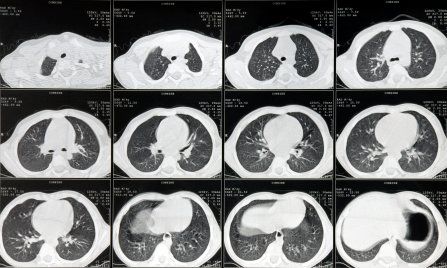Fewer Lung Cancer Patients Eligible for Screening
A retrospective analysis suggested that a declining proportion of patients with lung cancer would meet the criteria for undergoing low-dose CT screening.
Screening guidelines may need revisions to prevent the exclusion of some lung cancer patients

A retrospective analysis suggested that a declining proportion of patients with lung cancer would meet the criteria for undergoing low-dose computed tomography (LDCT) screening. This is largely due to changes in smoking habits, and highlights the possibility that revised criteria may be necessary.
“Lung cancer screening using low-dose computed tomography is recommended for high-risk individuals by professional associations, including the U.S. Preventive Services Task Force (USPSTF),” wrote authors led by Ping Yang, MD, PhD, of the Mayo Clinic in Rochester, Minnesota.
Based on results from the National Lung Screening Trial, the USPSTF guidelines recommend annual screening with LDCT for adults aged 55 to 80 years who have a 30 pack-year history of smoking and who currently smoke or have quit within the last 15 years. The guidelines specifically recommend discontinuing screening once a person has not smoked for 15 years.
The researchers examined who among a well-defined population would qualify for screening under those recommendations; the cohort included about 140,000 individuals all living in Olmstead County, Minnesota, between 1984 and 2011. Results of the study were published online on February 24 in the Journal of the American Medical Association.
A total of 1,351 individuals had incident primary lung cancer in that period; the mean age at diagnosis was 68.1 years and 54.9% of cases were male. The incidence rate declined significantly over the study period, from 52.3 per 100,000 person-years in 1984-1990 to 44.1 per 100,000 person-years in the 2005-2011 period. The authors noted that the proportion of patients with lung cancer who smoked at least 30 pack-years declined over time, while the proportion of smokers who quit at least 15 years before increased.
“We observed a decline in the relative proportion of patients with lung cancer meeting the USPSTF criteria,” the authors wrote. That proportion dropped from 56.8% in the 1984-1990 period down to 43.3% in the 2005-2011 period. The decrease was significant in both men and women.
The authors did point out that these trends may not be generalizable to the entire population, but the trends in lung cancer incidence do reflect the overall national trends based on SEER data.
“The decline in the proportion of patients meeting USPSTF high-risk criteria indicates that an increasing number of patients with lung cancer would not have been candidates for screening,” they concluded. “More sensitive screening criteria may need to be identified while balancing the potential harm from computed tomography.”